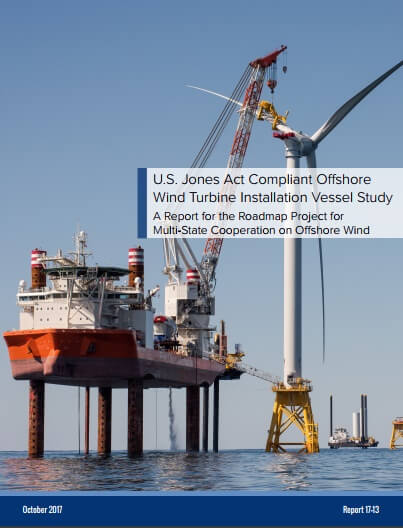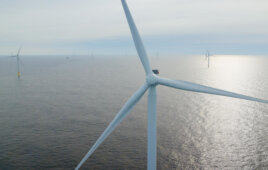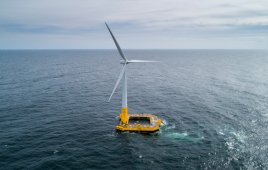This article comes from the MaritimeFedWatch blog posted by Winston & Strawn LLP and authored by Charlie Papavizas.
On November 2, 2017, a study entitled “U.S. Jones Act Compliant Offshore Wind Turbine Installation Vessel Study” was released. The Study was prepared for state government energy authorities in Massachusetts, New York, and Rhode Island.
 The Jones Act restricts the transportation of merchandise between “points in the United States” to U.S.-flag vessels built in the United States. Related laws restrict the transportation of passengers between U.S. points and towing and dredging in U.S. waters.
The Jones Act restricts the transportation of merchandise between “points in the United States” to U.S.-flag vessels built in the United States. Related laws restrict the transportation of passengers between U.S. points and towing and dredging in U.S. waters.
The Jones Act has been interpreted to extend to offshore installations, such as oil and gas drilling rigs, provided that they are permanently or temporarily attached to the U.S. outer continental shelf. The Study assumes that offshore renewable energy installations, such as an offshore wind tower, would also be covered by the Jones Act. The law that has been interpreted to extend the Jones Act offshore to oil and gas activity—the Outer Continental Shelf Lands Act as amended—does not clearly apply to any activity other than the extraction of natural resources.
The Study notes that a vessel that installs tower and turbine components offshore that plays no part in the transportation of those components from the United States can be a foreign-flag vessel. The picture on the cover of the Study of a foreign-flag jack-up installation vessel installing tower components off the coast of Block Island, Rhode Island is a good example of this principle in action.
Should, however, there be sufficient offshore wind farm installation volume in the United States to support a Jones Act qualified purpose-built installation vessel, the Study estimates a cost of $222 million with a construction time of approximately 34 months. The Study finds that to a achieve a reasonable combination of day rates (assumed to be $220,000) and an internal rate of return of 10 percent, at least 10 years of U.S. offshore wind farm installation work would be needed installing approximately 3,500 to 4,000 MW of offshore wind capacity. The Study admits that this would require “a group of states and developers [to] coordinate on an identified pipeline of projects.”
A different approach would be to build purpose-built Jones Act qualified jack up feeder vessels. If offshore wind farm installations are considered “points in the United States” under the Jones Act, any transportation of wind farm components from the U.S. to those points would have to be in U.S.-built Jones Act-qualified vessels. The Study estimates the cost of a purpose-built feeder vessel to be $87 million with a construction time of 25 months, and notes that, “for maximum efficiency, two or more feeder barges could be employed depending on project requirements.”
Filed Under: Offshore wind




